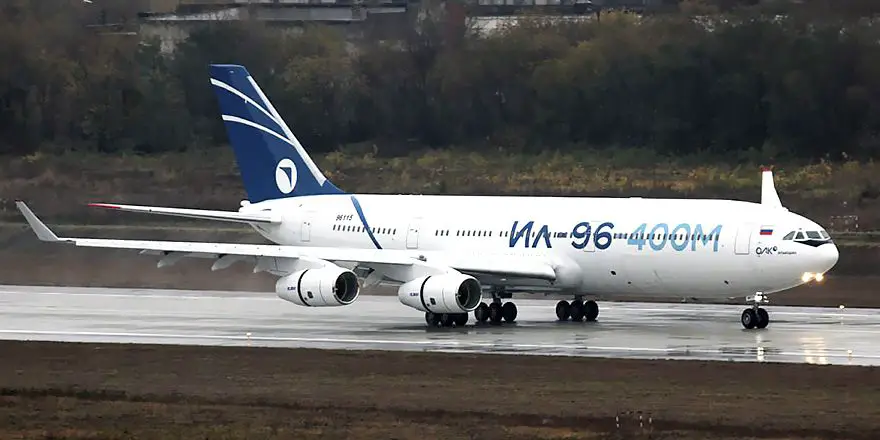Russia’s civil aviation industry has been mainly focused on the development of modern wide-body aircraft, which is motivated by a desire for strategic independence and to compete with Western manufacturers such as Boeing and Airbus. The primary focus has been on two primary possibilities: the development of a new or derivative aircraft based on the IL-96 platform and the ambitious joint venture with China to construct the CR929.
Over the past decade, numerous proposals for modernization and derivative models have focused on the IL-96, a wide-body aircraft from the Soviet era that is a legacy of its time. These proposals have encompassed structural enhancements, updated avionics, and more efficient engines to align the aircraft with contemporary standards. Nevertheless, the IL-96’s commercial prospects have been impeded by its outdated design, four engines and limited production lines, which has prompted Russian authorities and industry stakeholders to contemplate more radical solutions, such as the creation of a brand-new wide-body aircraft.
In parallel to these domestic projects, Russia established a high-profile partnership with China in 2014 to collaborate on the development of a next-generation wide-body aircraft, the CR929. During President Putin’s visit to China, an agreement was signed to formalize this initiative. The United Aircraft Corporation (UAC) represented Russia, while COMAC represented China. The CR929 was intended to be a direct competitor to the Boeing 787 and Airbus A330, with the goal of achieving significant production volumes, long-range, and advanced technology.
The funding for these extensive initiatives has been strategically allocated and substantial. Drawing from unused funds that had been previously invested in UAC’s authorized capital, the Russian government allocated substantial quantities for the development of a wide-body, long-haul aircraft. Nevertheless, it has not been expressly stated whether this allocation is specifically dedicated to the Russia-China CR929 project, a new Russian design, or an IL-96 derivative. This ambiguity is indicative of the ongoing debate and uncertainty within the Russian aviation sector regarding the ultimate trajectory of its wide-body aircraft-based strategy.
The CR929 has achieved significant development milestones, such as the unveiling of full-scale models and prototypes at significant international airshows in Russia and China. The project’s initial objective was to produce approximately 800 aircraft over a two-decade period, with the first deliveries anticipated for the years 2026–2027. Nevertheless, the project has encountered significant obstacles, including disputes over intellectual property, market access, and the distribution of manufacturing responsibilities between the Russian and Chinese partners, despite having achieved these milestones. Delays and rumors regarding the partnership’s future have resulted from these complications.
The PD-35 engine, Russia’s most sophisticated high-thrust turbofan project, is a critical enabler for both the CR929 and any new design or modernized IL-96 variant. Featuring a 3.1-meter fan diameter, sophisticated composite materials, and 3D-printed components to reduce weight and improve efficiency, the PD-35 is engineered to generate up to 35 tonnes of thrust. Serial production has been delayed until 2030 as a result of resource reallocation and changing industrial priorities, although initial testing milestones have been achieved since the development of the product commenced in 2016. It is anticipated that the PD-35 will be a game-changer, as it has the potential to enable a twin-engine IL-96-400M and serve as Russia’s offering for the CR929. This will reduce dependence on Western engine suppliers and support the country’s long-term ambitions in the global wide-body aircraft market.
In recent years, Russia’s budgetary approach to developing wide-body aircraft has been characterized by a combination of caution and dedication. While substantial funds are still allocated for wide-body aircraft, the overall aviation industry has experienced significant funding reductions as a result of production delays and changing priorities. However, the government’s dedication to the strategic importance of this aviation sector is evident in its willingness to redirect unused capital and provide financial support for wide-body development.
The future of Russia’s wide-body aircraft program is still a topic of strategic debate and conjecture as of mid-2025. Whether Russia will ultimately pursue a new indigenous design, persist with the IL-96 modernization, or resolve its differences with China to bring the CR929 to fruition remains a topic of debate among industry observers. It is evident that Russia’s commitment to establishing a competitive presence in the global wide-body aircraft market is reflected in the ongoing efforts and the allocation of funds, despite the technical, commercial, and geopolitical obstacles that persist.
Altitude Addicts predicts Russia will develop a brand new wide-body design. On November 21, 2024, Anton Alikhanov, the Minister of Industry and Trade, revealed that Russia is developing a new wide-body aircraft that will run on domestically made PD-35 engines.
Official Website of Youtube Channel – Altitude Addicts
